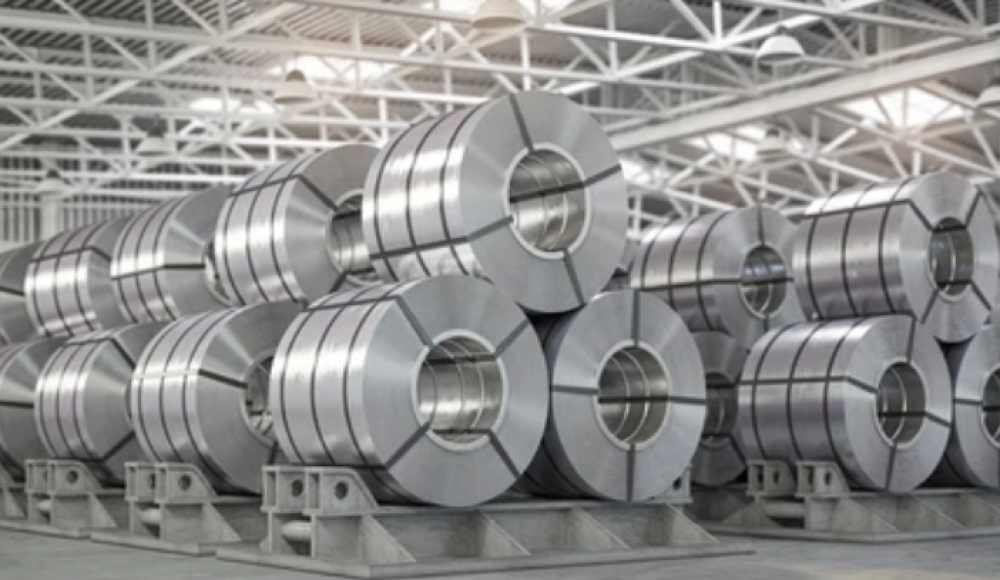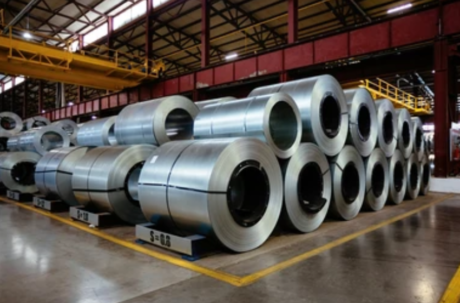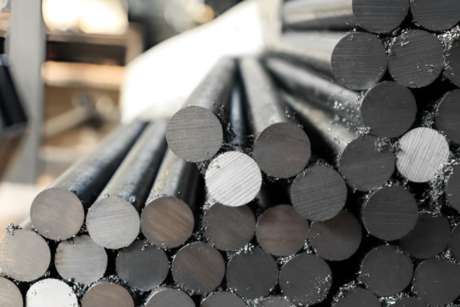Alloys are essential in every facet of the modern commercial world. They have a wide scope of applications in different industries. These extraordinary materials are made up of compounding two or more elements with characteristics that are not found in the basic elements. Starting with the Bronze Age Asiatic weapons that contributed to the formation of monarchies to the nanomaterials present in contemporary technologies, the alloys are versatile and have been widely used throughout history. So, in this article, we will look into the interesting topic of alloys and give information on the history of alloys, their constituents, and the principles used in making the alloys.
What is an Alloy?
An alloy in simple terms is a mixture of two or more metals or a metal and one or more nonmetals. Alloys show certain features like strength, durability, protection against corrosion, and heat and thus are a vital element utilized in many industries. An alloy is a blend of two or more metals and sometimes with non-metals that involves heating and mixing the ingredients to yield a material. It has properties that differentiate it from the constituent components.
What is the History of Alloys?
Alloys have been used since 3000 BCE. Brass ( Copper and Zinc) and Bronze ( Copper and Tin) were ancient alloys. Early metallurgical techniques were applied in their manufacturing process, this early metallurgical technique was known as smelting. In the smelting process, two ores of various compositions were smelted together.
Remarkably, in the 19th Century, it was investigated that traces of Nickel were present along with the Copper element but it was not isolated. The ores of these two metals were smelted and formed cupro-nickel. The product formed after the smelting process gave high strength.
Bronze and brass both changed the soft behavior of copper to show hardness, toughness, and resilience.
Composition of Alloys
Different percentage of elements gives different alloys. These alloys have unique abilities and applications. Let’s get a better understanding of the composition of alloys. Here is the detailed table for their composition percentages.
| Alloy | Main Components (Percentage by Weight) |
| Steel | |
| – Carbon Steel | Fe: 98-99%, C: 0.2-2.1% |
| – Alloy Steel | Fe: 95-98%, C: 0.2-2%, Cr: 0.5-2%, Ni: 0.5-2%, Mo: 0.1-1% |
| – Stainless Steel | Fe: 70-88%, Cr: 10.5-20%, Ni: 0-10%, C: 0.08-1% |
| – Tool Steel | Fe: 70-95%, C: 0.5-2%, W: 0-18%, Mo: 0-5%, V: 0-5% |
| Cast Iron | |
| – Gray Cast Iron | Fe: 93-95%, C: 2-4%, Si: 1-3% |
| – Ductile Cast Iron | Fe: 94-96%, C: 3-4%, Si: 1.8-2.8%, Mg: 0.03-0.05% |
| – White Cast Iron | Fe: 94-96%, C: 2-3.5%, Si: 0.5-1.5% |
| Aluminum Alloys | |
| – 2024 Aluminum | Al: 90.7-94.7%, Cu: 3.8-4.9%, Mg: 1.2-1.8%, Mn: 0.3-0.9% |
| – 6061 Aluminum | Al: 95.8-98.6%, Mg: 0.8-1.2%, Si: 0.4-0.8%, Cu: 0.15-0.4% |
| – 7075 Aluminum | Al: 87.1-91.4%, Zn: 5.1-6.1%, Mg: 2.1-2.9%, Cu: 1.2-2% |
| Copper Alloys | |
| – Brass | Cu: 60-70%, Zn: 30-40% |
| – Bronze | Cu: 88-97%, Sn: 3-12% |
| Titanium Alloys | |
| – Grade 5 (Ti-6Al-4V) | Ti: 88.6-91%, Al: 5.5-6.75%, V: 3.5-4.5% |
| – Grade 2 | Ti: 99.2-99.7%, Fe: 0.3%, O: 0.25% |
Types of Alloys
Here are certain types of alloys;
1. Ferrous Alloys
Ferrous alloys consist of iron as one of the main components. These have many applications in different fields. Common ferrous alloys include:
1. Steel
Steel is an alloy that forms as a result of mixing iron with other elements, i.e. carbon. The amount of carbon can lie between 0. 2% to 2. 1% by weight. Other elements such as chromium, nickel, or vanadium may also be used to change other characteristics of steel. Different types of steel include:
- Carbon Steel: It hosts only iron and carbon with no other grade of chemical composition. They classify it based on the percentage of carbon i.e. carbon steel pipe, medium carbon steel pipe, high carbon steel pipe. Carbon Steel is typically strong and hard and it is often used in the construction industries and manufacturing industries.
- Alloy Steel: It contains other smaller quantities of alloying elements like chromium which increases strength, nickel which increases toughness, and molybdenum increases resistance to wear and corrosion. Among the uses of alloy steel, it has many applications in the manufacture of automotive products, machinery, and tools.
- Stainless Steel: It contains 5% chromium which gives the steel good corrosion resistance ability. This type of carbon has applications in kitchen utensils, medical instruments, and construction accessories.
- Tool Steel: Comprising components such as: tungsten, molybdenum cobalt, and vanadium. Its properties include high durability and heat resistance. These features make it fit for cutting, pressing, and making molding tools.
2. Cast Iron
Cast iron is one of the old types of iron-carbon alloys. It contains carbon quantity of more than 2% and silicon. Some of the characteristic features are its hardness, brittleness, and the edge it has over most other alloys in terms of castability. Types of cast iron include:
- Gray Cast Iron: It contains graphite flakes. They make them gray and are generally easy to turn. Some of its application includes: engine blocks, pipes, and various machinery.
- Ductile (Nodular) Cast Iron: It contains spherical graphite nodules which increase the ductility and the impact strength. It has many applications in car parts, gears, and crankshafts.
- White Cast Iron: It mainly comprises iron carbide – very hard, but also brittle. It is applied to wear-resistant coatings and various industrial sectors where the property of abrasion resistance is critical.
2. Non-Ferrous Alloys
Non-ferrous alloys don’t contain iron as an element of the main composition. These are preferable due to their low density, and good anti-corrosive features. Besides this, they have high electric and thermal conductivity. Common non-ferrous alloys include:
1. Aluminum Alloys
Aluminum alloys have very good corrosion resistance properties. These are normally combined with other elements such as copper, magnesium, silicon, and zinc. Common uses include:
- Aerospace Industry: Aluminum alloys have wide applications in structures, fuselages, and wings due to their lightweight but high strength.
- Automotive Industry: They are highly applicable in the car body, engine part, wheels, etc due to the effectiveness of fuel and ease of body weightage.
- Packaging Industry: Aluminum cans and foil are employed in the packaging of foods and beverages. Because it is non-toxic and recyclable.
2. Copper Alloys
Copper alloys are mainly famous for their feature of being a good conductor of electricity and being anti-corrosive. Common copper alloys include:
- Brass: A copper-zinc alloy that has a golden appearance and good machinability. It finds application in the manufacturing of guitars, drums, ornaments, and plumbing fixtures.
- Bronze: A special composition of metal; copper and tin characterized by its hardness and resistance to wear and corrosion. It applies in the manufacturing of bearings, bushing, and sculptures.
3. Titanium Alloys
Some important properties that make titanium alloys preferable are high strength-to-weight ratio, good corrosion resistance, and bio-compatibility. They have many applications in
- Aerospace Industry: They are relatively light while at the same time enduring. So, they have applications in making aircraft frames, engines, filters, and fasteners.
- Medical Implants: these are non-degradable and compatible with the human body. So, they have numerous applications in making articular bearing surfaces in joint replacements, dental prostheses, and surgical tools.
- Marine Applications: They are used in making propeller shafts because the shafts certainly have to run under the water and have the best corrosion resistance.
What is the Difference Between Metals, Non-metals, and Alloys?
Here is the detailed table to describe the difference between alloys, metals, and non-metals.
| Property | Metals | Non-Metals | Alloys |
| Composition | Single element (e.g., Fe, Cu) | Single element (e.g., C, O) | A mixture of metals or metals with non-metals (e.g., steel, brass) |
| Electrical Conductivity | High (e.g., Cu, Al) | Low (e.g., S, P) | Varies (generally high for metal-based alloys) |
| Thermal Conductivity | High | Low | Varies (generally high for metal-based alloys) |
| Malleability | High (e.g., Au, Ag) | Low (e.g., S, P) | Generally high (e.g., bronze, aluminum alloys) |
| Ductility | High (e.g., Cu, Al) | Low (e.g., S, P) | Generally high (e.g., steel, brass) |
| Strength | Variable (e.g., high for Ti, low for Pb) | Generally low (e.g., graphite, sulfur) | Generally high (e.g., stainless steel, titanium alloys) |
| Corrosion Resistance | Variable (e.g., high for Au, low for Fe) | Generally high (e.g., diamond) | Generally high (e.g., stainless steel, aluminum alloys) |
| Density | Generally high (e.g., Fe, Pb) | Generally low (e.g., H, C) | Variable (e.g., high for steel, low for aluminum alloys) |
| Typical Uses | Structural, electrical, and thermal applications | Insulation, semiconductors, life essentials (e.g., O2) | Wide range of industrial, structural, and specialized applications (e.g., aerospace, automotive) |
What are the Applications of Alloys?
So, let’s discuss some prominent applications of alloys.
- Construction: The main material in the construction of building structures is steel, i.e. alloy of iron and carbon.
- Aerospace: Aircraft needs material with properties such as high strength, low density, and high-temperature resistance. So, Titanium alloys have the advantages of high strength-to-weight ratio and thermal stability.
- Automotive: Lightweight and ability to resist corrosion make aluminum alloys the best option to improve fuel economy and performance.
- Electronics: Bronze-based alloys have wide applications in electrical connections and components due to their conductivity and strength.
- Medical Devices: Stainless steel and cobalt-chromium alloys have applications in implant and surgery tools and equipment. This is mainly because these metals do not evoke an adverse reaction from body tissues and are strong enough.
What are the Benefits of Alloys?
- Increased Strength: High strength and hardness of the base metals free from alloying additions.
- Enhanced Corrosion Resistance: Improved resistance to rust as well as other forms of degradation.
- Greater Durability: Higher original values in tough conditions.
- Customized Properties: When pushing for the relationship between fit and customization, it is important to note that characteristics must be relative to specific applications.
- Cost Efficiency: They potentially lower costs through the use of materials.
What are the Limitations of Alloys?
- Complex Properties: Even less easy to predict and control than primary metals.
- Higher Costs: Some realized alloys can be costlier to prepare.
- Manufacturing Difficulties: It can be comminuted, reformed, and bonded. Besides this, it may involve complicated processing and machining.
- Environmental Impact: They increase the possibility of large environmental and energy expenses.
Conclusion
Alloys have always been a significant part because they tend to possess much superior features than metals. Through the alteration of metals and elements, many researchers and engineers can bring forth substances that can suit the desired needs. So, this helps increase the efficiency and quality of materials used in the construction, transportation, electronics, and healthcare industries. Moreover, the properties of various alloys assist in the selection of the right material for a certain application. They also help improve safety, efficacy, and durability. Contact us for more professional ideas.







12 thoughts on “What is an Alloy? Its Types, Composition and Applications in Different Fields”